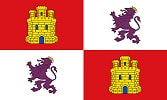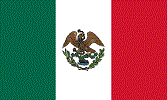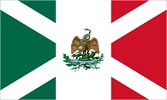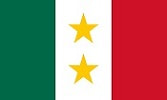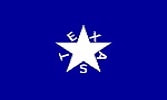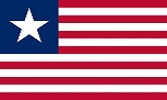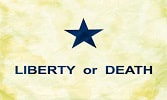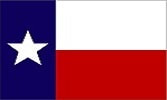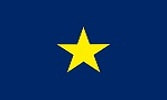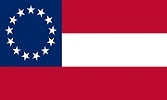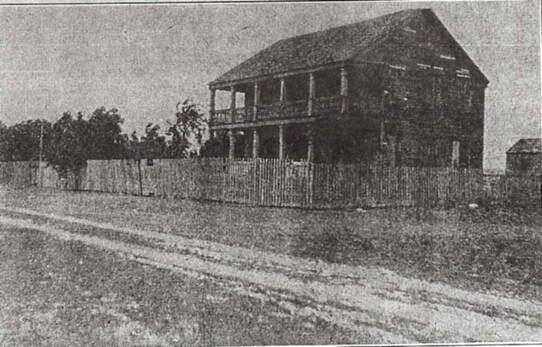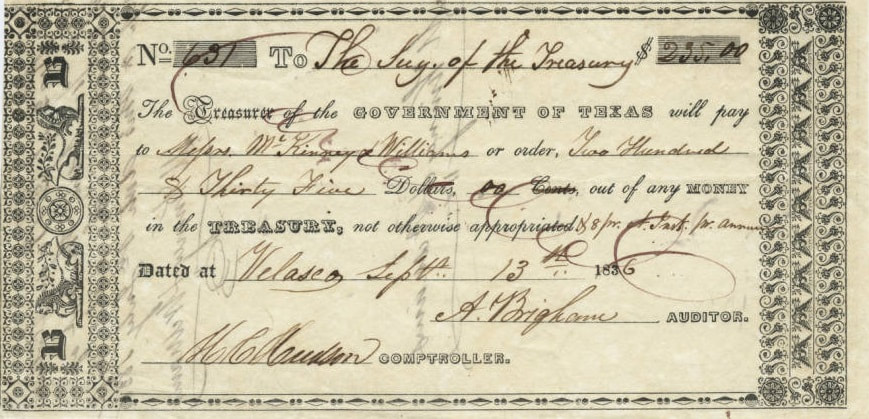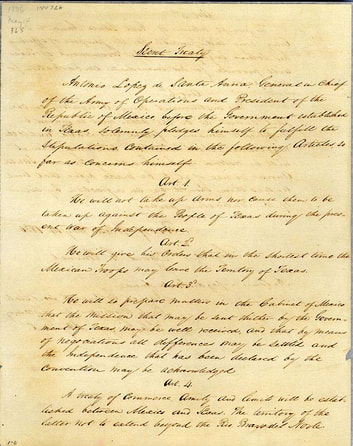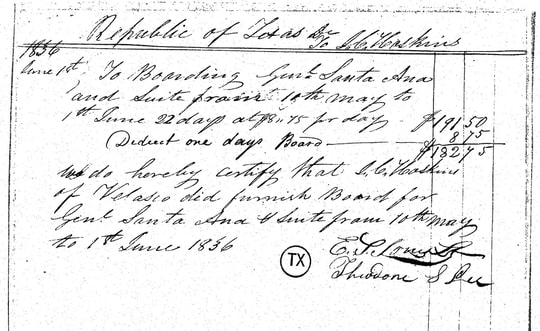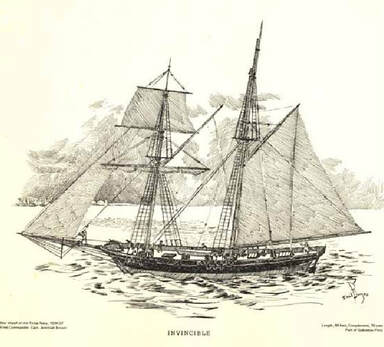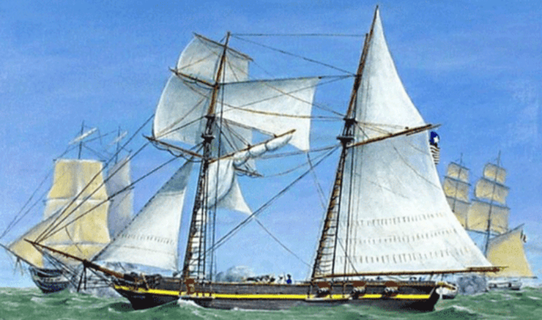Velasco as Seat of Government
Republic of Texas (May to October 1836)
Republic of Texas (May to October 1836)
|
The Republic of Texas battery (2nd previous page) was known as the best coastal defense work in Texas in May-1836. Perhaps for this very reason, and the new robust Texas Navy, the government of the Republic Of Texas first convened at Velasco after the Battle Of San Jacinto from May-Oct 1836. Ad interim president David G. Burnet and General Sam Houston, along with Santa Anna and his officers, were transported on the steamboat Yellowstone from Buffalo Bayou to encamp on Galveston Island on 5-May-1836. Santa Anna was then placed aboard the Independence, and on 8-May-1836 President Burnet and his Cabinet came aboard and made sail for Velasco. As Alex Dienst wrote “Velasco was the great seaport of the Republic at that time.” The wounded Sam Houston was transported in the opposite direction to New Orleans for medical care aboard the schooner Flora, accompanied by the war schooner Liberty. It is very likely that “the government” actually met at existing and modest houses, such as the Brown-Hoskins hotel/tavern (American Hotel) in Block 11 or others; the capital at Velasco is described briefly in an article in National Republic magazine (right).
|
|
The government’s records were kept at Velasco for a short period, and the fort was occupied with a small garrison. Financial warrants, notes and pay certificates were issued by the government from Velasco. Other types of financial documents known as audited drafts can be found in SMU’s Rowe-Barr Collection Of Texas Currency issued at Velasco. Beginning in Jun-1836, the new Republic of Texas first began use of printed notes, known as "Sphinx Notes" due to the image in the left margin (one example is shown to the left). |
|
And, it was here that Santa Anna signed the Treaties Of Velasco on 14-May-1836, in the form of a Public Treaty and a Secret or Private Treaty. It is known that Santa Anna was held prisoner during this period at Velasco, along with Ramón Martínez Caro (his secretary) and Colonels Juan Nepomuceno Almonte and Gabriel Nuñez Ortega. Caro wrote afterwards “... we were lodged in a small room surrounded by sentinels”. In compliance with the treaties, Santa Anna was to be returned to Mexico, and indeed was put aboard the Invincible standing off of Velasco on 1-Jun-1836 for his return to Veracruz. However, hard feelings among the Texans, especially a group of 230 new volunteers under Gen. Thomas Jefferson Green who arrived on the steamer Ocean from New Orleans, delayed the departure, wanting to punish Santa Anna. Instead, Santa Anna was brought ashore first at Quintana for safekeeping, and then stayed at Velasco until 15-Jun-1836 when William H. Patton took him upstream to his family’s plantation (now the Varner-Hogg State Historical Site) on the steamer Laura for some weeks, until he was again transferred on 30-Jul-1836 to Orozimbo Plantation north of Columbia for several months. Finally, he went to Washington DC before returning to Mexico. |
|
|
Other documents from the Texas State Archives indicates that, in the period when Santa Anna negotiated and signed these treaties, he and his officers were housed at a rented house belonging to Francis J. Haskins, with board provided by the American Hotel owned by Isaac C. Hoskins and Jeremiah Brown (left). It is known that Santa Anna was held prisoner during this period at Velasco, along with Ramon Martinez Caro (his secretary) and Colonels Juan Nepomuceno Almonte and Gabriel Nuñez Ortega. So, the term "Santa Ana and Suite" in the upper document, and "Santa Anna and other Prisoners" in the lower document, refer to this group. Additionally, the lower document indicates that soldiers (of the Republic of Texas?) were housed in the "Store" of Francis J. Haskins. Gabriel Nuñez Ortega kept a diary, and a few entries are shown here: May 10 - “... we were given a small house, very dirty and without hope of means of living. In the evening a hotel sent us a piece of fried fish, coffee and some terrible (ugly) bread”. May 11 – “In Velasco we did nothing else but kill and shoo away the many flies that were there.” May 12 – “They talked a bit about the negotiations for the Agreement. Our good friend Wharton arrived with milk, butter and some greens and he went away to bring us back other things.” May 13- “There were conferences with the Texas Cabinet and almost concerned the Agreement. Colonel Wharton assisted in the discussion. That night our trunk was robbed of $125.00 while we slept.” May 14 – “The Agreement and Public was definitely agreed upon and reached agreement a published, both were put in clean (final) form for signatures with this date, although it must be verified tomorrow Sunday. Present were President Burnet, Hardyman, Collingsworth and Grayson. Mr. Lamar was not present because of occupation elsewhere. Mr. Porter because he was absent.” May 15 – “The agreements were signed in the evening and it was agreed to send them to the Mexican and Texas Generals tomorrow.” Jeremiah Brown was also captain of the war schooner Invincible (images below) of the new Republic of Texas Navy. Velasco had become the homeport of the steamboat Yellowstone and the war schooners Invincible and Independence. |
A narrative report that discusses all of the research on
the several Forts Velasco is available at the link below:
A narrative report that discusses all of the research on
the several Forts Velasco is available at the link below:
<<< The Drawings of Eduard Harkort < click for other pages > Civil War Forts >>>
Background wallpaper is from 1836 version of "Map of Texas - With Parts of the Adjoining States" by Stephen F. Austin, printed by H. S. Tanner of Philadelphia
Background wallpaper is from 1836 version of "Map of Texas - With Parts of the Adjoining States" by Stephen F. Austin, printed by H. S. Tanner of Philadelphia
